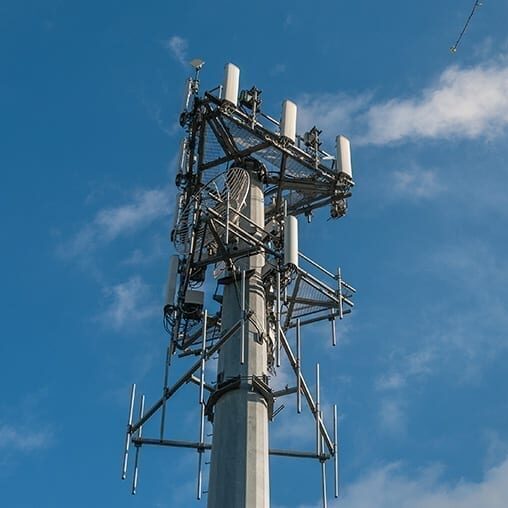Why You Should Consider Delaying 5G RedCap Device Use
By Safi Khan
July 21, 2023
Today, 5G technology is the de facto standard for high-speed broadband cellular communications. While we are in the era of 3GPP Release (Rel) 16, the next standard (Rel 17) will define a new class of 5G New Radio (NR) devices called the reduced capability (RedCap) device. 5G RedCap is, as the acronym implies, a reduced-capability version of 5G.
The main difference between 5G RedCap and regular 5G is that a 5G RedCap device has a simpler radio design and modem and operates on narrower bandwidths. These reductions also translate into lower costs.
Consider a highway with multiple lanes. Regular 5G can handle high traffic on all the highway lanes simultaneously by using techniques like wider channel bandwidth carrier aggregation.
However, 5G RedCap has narrower channel bandwidth, and it cannot aggregate carriers. In addition, the number of antennas supported in regular 5G devices is up to four, while RedCap devices support up to two antennas. In our example, it can handle traffic on only one lane and at a lower speed, in a limited manner.
With reduced capability, there comes a distinct advantage that may not be so obvious at first glance. 5G’s adoption and range of new applications can expand due to:

One of the complaints in the industry was that new 5G mobile broadband products were expensive. There are several 5G vendors, but it has been a massive investment, and the technology is complex. As a result, 5G RedCap was introduced to serve as an efficient, lower-cost alternative.
5G RedCap will leverage the full 5G spectrum, including mid-band, private network bands, Citizens Broadband Radio Service (CBRS), etc. Private networks are ideal for RedCap since 5G massive machine-type communication (mMTC) is not yet available and will not reach many private network bands.
There is a significant growth in new commercial deployments of regular private 5G networks in CBRS band in North America. When the NR RedCap ecosystem is ready and devices supporting CBRS band are launched, this sector will grow more due to the availability of cost-effective solutions.
5G RedCap can be a good match for IoT use cases that don’t require ultrahigh speed or ultralow latency. Applications for RedCap include wearables, surveillance cameras and some solutions in industrial IoT settings.
Beyond connecting to the new 5G network and enabling its functionalities, 5G RedCap is, from a throughput performance perspective, like mid-speed LTE Cat 4. It has speeds of around 150 megabits per second (Mbps) downlink and 50 Mbps uplink.
Short answer: No, 5G RedCap is not yet available. Businesses should be suspicious of any lofty promises that say otherwise.
According to leading mobile network operators (MNOs), new 5G RedCap networks will not be ready to launch until 2024. One reason for the slower rollout and adoption is the need for 5G stand-alone (SA) networks. SA rollouts are progressing, but there are still far fewer SA networks than non-stand-alone (NSA) networks.
Throughout 2023, MNOs will start upgrading their networks from Rel 16 to Rel 17. When commercially available, the chipsets will undergo interoperability testing on the new networks with infrastructure vendors that also support RedCap. They will adjust these networks to recognize 5G devices with a RedCap indicator. The indicator allows the network to identify NR RedCap devices and treat them accordingly.

At present, for Rel 16 networks to understand the RedCap devices, the device would have to have special indications. These indications limit the device to use the reduced functionality as compared to regular 5G devices. An alternative approach is to support the fallback to 4G LTE.
While the Rel 17 5G RedCap standard is ready, networks still need to upgrade to Rel 17, a type of NR SA. This means 5G base stations are connected to the 5G core so that RedCap devices can operate as RedCap. However, if 5G does not fulfill this, then 4G fallback is needed to be on the safe side.
If a company deploys a 5G RedCap device before the official commercial launch of the new standard (2024-2025), the device will still power up and connect. However, because all RedCap chipsets have a 4G fallback, that device will default to 4G since there will be no 5G RedCap network signal. Therefore, it wouldn’t be different from paying for a more expensive mid-speed LTE or 4G Cat 4 device with the same performance.
Realistically, the new 5G RedCap ecosystem will not be ready until 2024, when the devices, infrastructure, and networks will be ready. Still, RedCap is coming, and it is a complex technological evolution.
Telit Cinterion is the leader in bringing new cellular technologies to market to help our customers achieve their business objectives. We can help you strategize designs for mid-speed use cases and guide you throughout the transition.
Speak with our IoT experts to learn about our mid-speed LTE IoT modules portfolio.